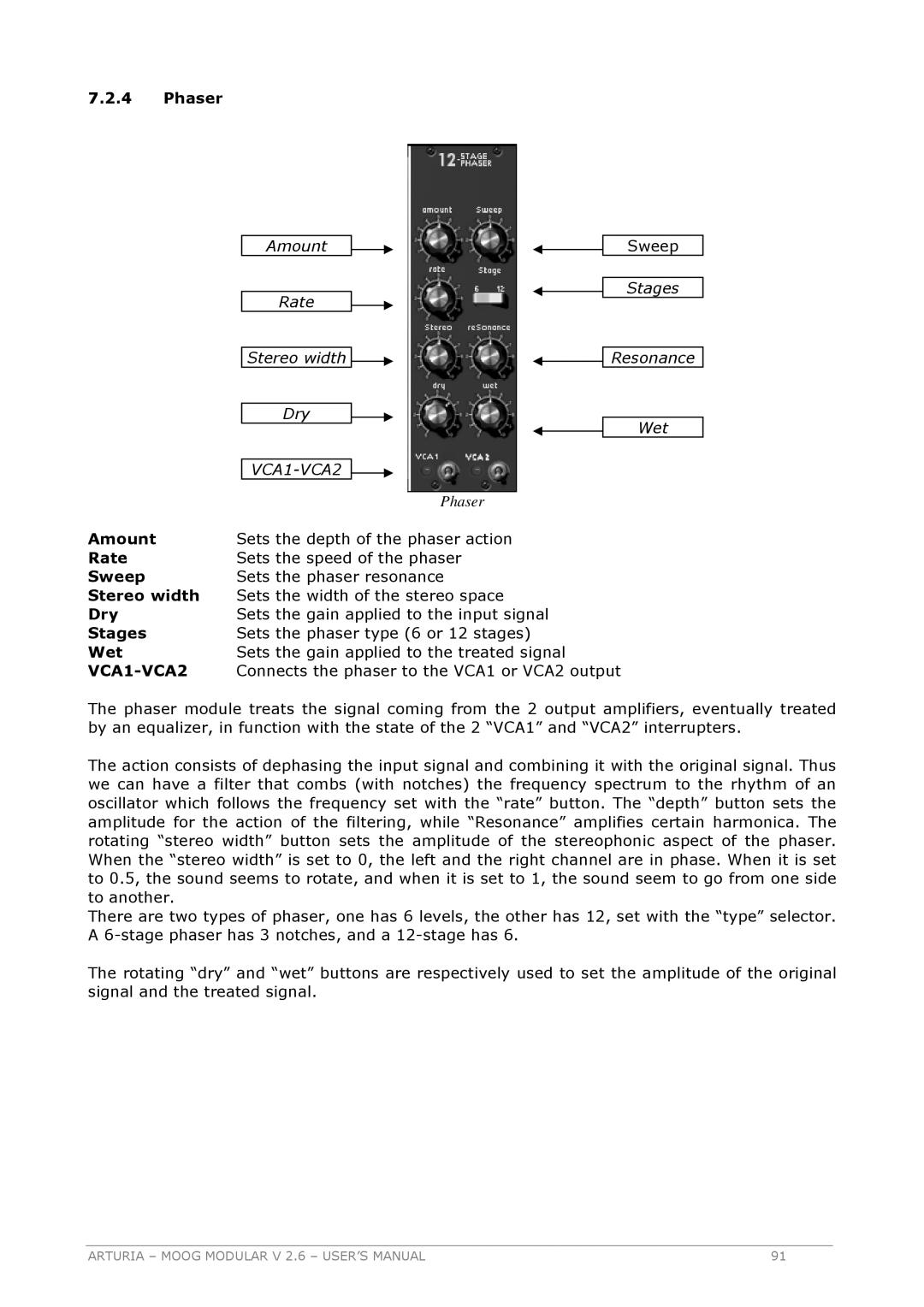
7.2.4Phaser
|
| Amount |
| Sweep |
|
|
|
|
|
|
|
|
| Stages |
|
| Rate |
|
|
|
|
|
|
|
|
| Stereo width |
| Resonance |
|
|
|
| |
|
| Dry |
|
|
|
|
|
| Wet |
|
|
|
| |
|
|
|
| |
|
|
| Phaser |
|
Amount | Sets the depth of the phaser action |
| ||
Rate | Sets the speed of the phaser |
| ||
Sweep | Sets the phaser resonance |
| ||
Stereo width | Sets the width of the stereo space |
| ||
Dry | Sets the gain applied to the input signal |
| ||
Stages | Sets the phaser type (6 or 12 stages) |
| ||
Wet | Sets the gain applied to the treated signal |
| ||
| Connects the phaser to the VCA1 or VCA2 output | |||
The phaser module treats the signal coming from the 2 output amplifiers, eventually treated by an equalizer, in function with the state of the 2 “VCA1” and “VCA2” interrupters.
The action consists of dephasing the input signal and combining it with the original signal. Thus we can have a filter that combs (with notches) the frequency spectrum to the rhythm of an oscillator which follows the frequency set with the “rate” button. The “depth” button sets the amplitude for the action of the filtering, while “Resonance” amplifies certain harmonica. The rotating “stereo width” button sets the amplitude of the stereophonic aspect of the phaser. When the “stereo width” is set to 0, the left and the right channel are in phase. When it is set to 0.5, the sound seems to rotate, and when it is set to 1, the sound seem to go from one side to another.
There are two types of phaser, one has 6 levels, the other has 12, set with the “type” selector. A
The rotating “dry” and “wet” buttons are respectively used to set the amplitude of the original signal and the treated signal.
ARTURIA – MOOG MODULAR V 2.6 – USER’S MANUAL | 91 |
